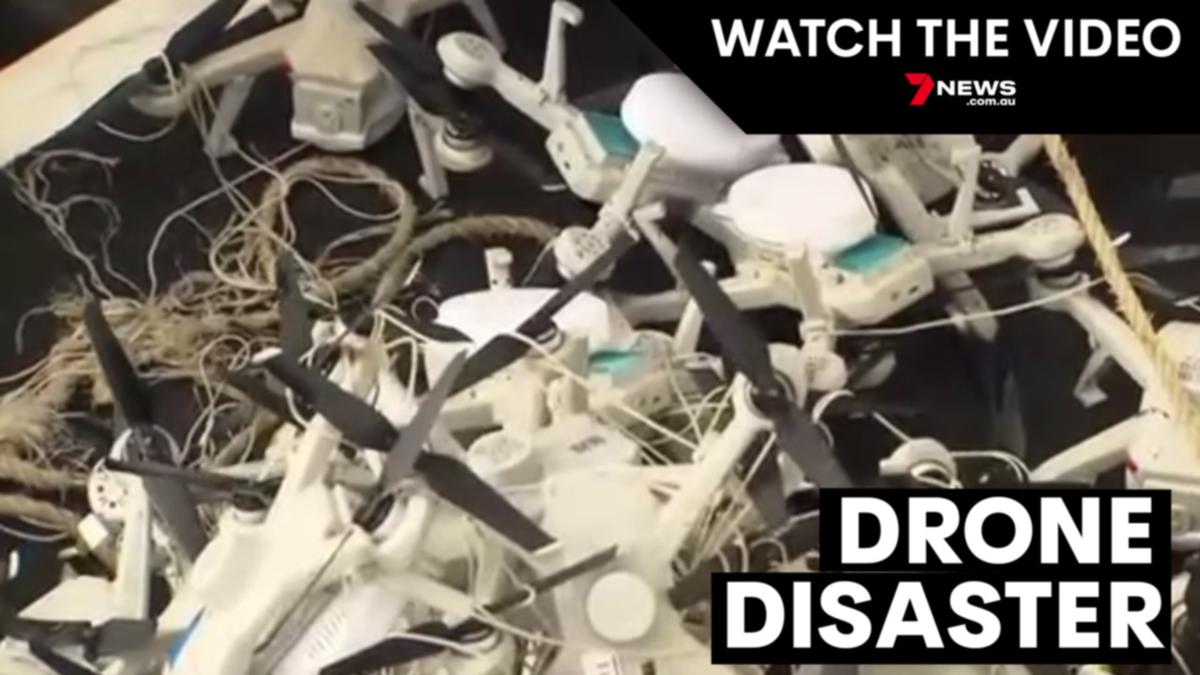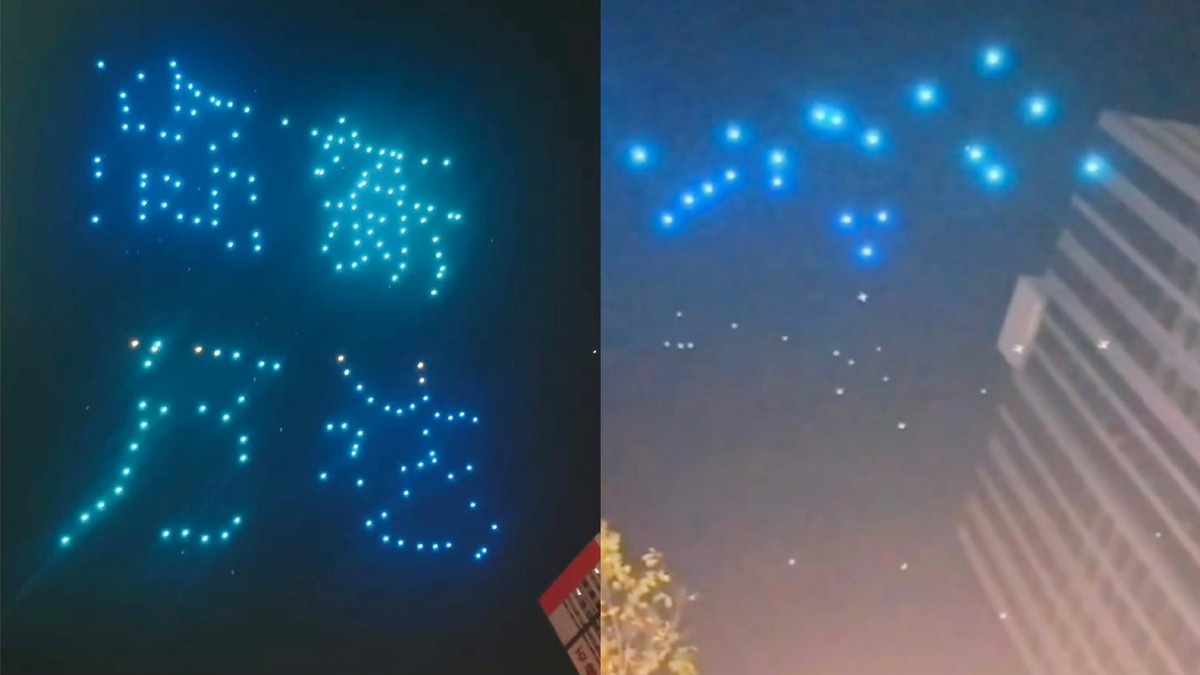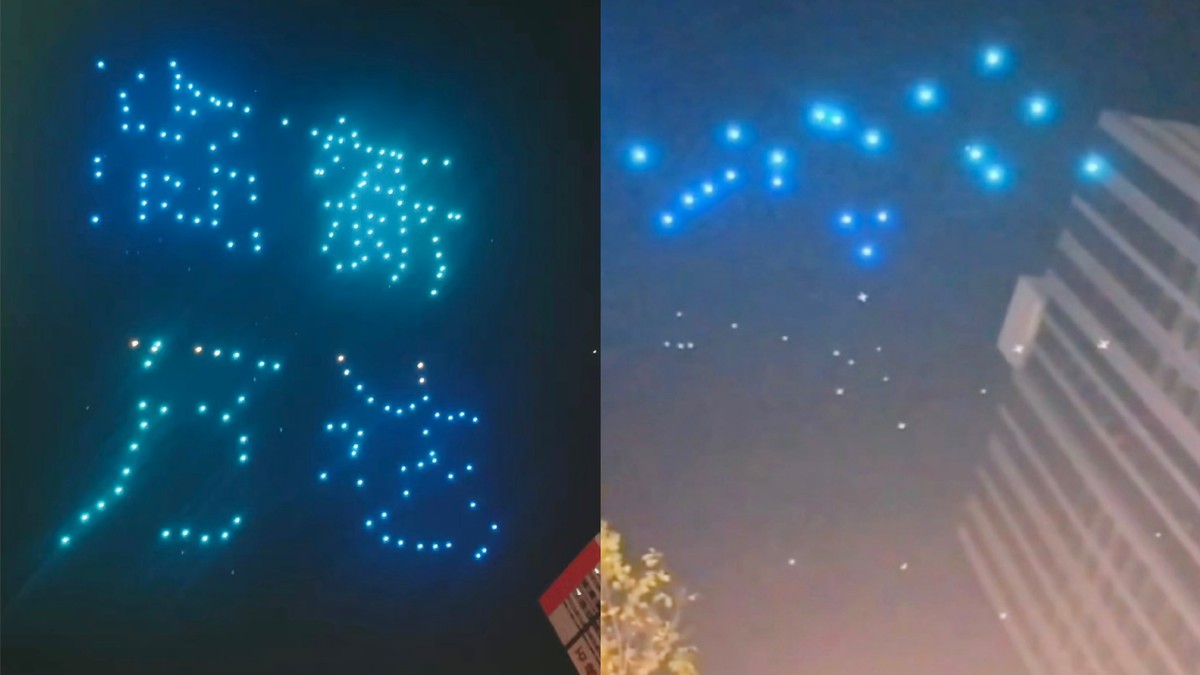Drone show crash: Imagine a breathtaking aerial spectacle suddenly turning chaotic. This isn’t just about malfunctioning machines; it’s a story of complex systems, human error, and the push for technological limits. We’ll explore the various ways these spectacular displays can go wrong, from software glitches to environmental mishaps, and delve into the safety measures, both current and future, designed to prevent such disasters.
This exploration will cover the different types of drone show crashes, examining their causes, consequences, and the crucial role of prevention. We’ll investigate safety protocols, technological advancements aiming to improve safety, and the post-crash investigation process. We’ll also consider the impact on public perception and the evolving narrative surrounding this exciting yet risky technology.
Drone show crashes are unfortunately becoming more common, highlighting the need for improved safety protocols. If you want to learn more about the causes and consequences of these incidents, check out this informative article on drone show accidents which covers a range of issues. Understanding these accidents is crucial to preventing future drone show crashes and ensuring safer, more spectacular displays.
Drone Show Crash Analysis: Understanding Causes, Prevention, and Impacts

Drone shows, while spectacular, carry inherent risks. Understanding the various ways these displays can fail, the safety protocols in place, and the potential consequences is crucial for improving the safety and reliability of future performances. This analysis delves into the multifaceted nature of drone show crashes, examining causes, preventative measures, and the technological advancements needed to minimize risks.
Types of Drone Show Crashes

Drone show crashes can stem from a variety of sources, broadly categorized as software malfunctions, hardware failures, environmental factors, and human error. Understanding these categories is vital for implementing effective preventative measures.
| Crash Type | Cause | Contributing Factors | Example |
|---|---|---|---|
| Software Malfunction | Bugs in flight control software, GPS errors, communication failures | Inadequate software testing, outdated firmware, reliance on single GPS source | A large swarm of drones losing synchronization due to a software glitch, resulting in a chaotic collision. |
| Hardware Failure | Motor failure, battery malfunction, GPS receiver failure | Use of low-quality components, lack of regular maintenance, extreme weather conditions | A single drone falling from the sky due to a motor failure during a performance, potentially causing minor damage. |
| Environmental Factors | Strong winds, rain, fog, extreme temperatures | Lack of proper weather monitoring, insufficient wind resistance in drone design | Multiple drones being blown off course during a windy show, resulting in collisions and a disrupted performance. |
| Human Error | Pilot error, incorrect programming, inadequate pre-flight checks | Lack of training, insufficient oversight, poor communication | A drone show being prematurely aborted due to the operator making a mistake during the pre-flight sequence. |
Safety Protocols and Prevention Measures
Several safety protocols aim to mitigate drone show crashes. These include rigorous pre-flight checks, redundant systems, and well-defined emergency procedures. However, improvements are always needed.
- Redundant Systems: Implementing backup systems for critical components (e.g., multiple GPS receivers, independent flight controllers) can significantly reduce the impact of single-point failures. Limitations include increased cost and complexity.
- Advanced Weather Monitoring: Utilizing sophisticated weather forecasting and real-time monitoring systems can allow for timely cancellations or adjustments to minimize environmental risks. Limitations include reliance on accurate weather predictions.
- Rigorous Pre-flight Checks: Comprehensive checklists and pre-flight inspections ensure that all drones are functioning correctly before a show commences. Limitations include the potential for human error during these checks.
- Emergency Procedures: Having clear and well-rehearsed emergency procedures in place allows for swift responses to unexpected events. Limitations include the difficulty of predicting and preparing for every possible scenario.
- Operator Training and Certification: Ensuring operators receive comprehensive training and hold appropriate certifications enhances their proficiency and minimizes human error. Limitations include the cost and time required for training.
Impact of Drone Show Crashes

The consequences of a drone show crash can be significant, encompassing environmental, financial, and reputational damage. The severity depends heavily on the scale of the failure and the circumstances.
A scenario involving a large-scale crash could lead to widespread damage to property, potential injuries to spectators, significant financial losses for organizers, and lasting damage to the public’s perception of drone shows. Immediate consequences would include emergency response efforts, show cancellation, and potential legal ramifications. Long-term consequences might involve reputational damage, stricter regulations, and increased insurance costs.
Technological Advancements for Mitigation
Several technological advancements hold promise for enhancing drone show safety. These include improved communication protocols, advanced autonomous navigation, and enhanced redundancy mechanisms.
For instance, the implementation of advanced collision avoidance systems using AI-powered obstacle detection and path planning could prevent many crashes caused by software glitches or environmental factors. While the technology offers substantial benefits, challenges include computational complexity and the need for reliable sensor data.
Post-Crash Response and Investigation
A standardized post-crash investigation protocol is crucial for understanding the root causes of accidents and implementing preventative measures. This involves detailed data acquisition from flight logs, drone components, and witness accounts.
The investigation would involve manufacturers providing technical specifications and data logs, operators detailing operational procedures, and regulatory bodies overseeing compliance with safety standards. A comprehensive report would be generated, outlining the cause of the crash and recommendations for future safety improvements.
Public Perception and Media Coverage
Media coverage significantly influences public perception of drone show safety. Negative reporting can erode public trust, while positive coverage highlighting safety advancements can foster acceptance.
Comparing public reaction to drone show crashes with other technological accidents reveals a complex interplay of factors, including the perceived novelty of the technology, the scale of the incident, and the level of transparency in investigations.
Illustrative Examples of Drone Show Crashes
Several real-world incidents highlight the potential for crashes and the importance of robust safety protocols. While specific details vary, these examples illustrate the visual impact—a sudden descent of multiple lights, accompanied by unsettling sounds of motors and impacts—which can range from a minor disruption to a significant safety hazard.
Drone show crashes are unfortunately becoming more common, highlighting the need for improved safety protocols. If you want to learn more about the causes and consequences of these spectacular failures, check out this informative article on drone show accidents which delves into the technical and logistical aspects. Understanding these accidents is crucial for preventing future drone show crashes and ensuring safer aerial displays.
One example could be a show where a sudden gust of wind caused several drones to veer off course, creating a chaotic scene. Another could be a case where a software glitch caused a synchronized loss of control in a large portion of the fleet, resulting in a cascade of collisions. A third might involve a battery failure leading to a single drone plummeting to the ground, narrowly missing spectators.
Final Wrap-Up: Drone Show Crash
Ultimately, preventing drone show crashes requires a multi-faceted approach. It’s a blend of robust safety protocols, ongoing technological innovation, and a clear understanding of the potential risks involved. By learning from past incidents and embracing advancements in autonomous navigation and communication, we can strive to make these spectacular shows safer and more reliable for both audiences and operators. The future of drone shows depends on it.
Essential Questionnaire
What is the most common cause of drone show crashes?
Drone show crashes are a serious concern, highlighting the need for robust safety protocols. One incident that underscores this is the unfortunate case of a boy hit by drone , a stark reminder of potential risks even outside of large-scale displays. Therefore, improving drone show safety measures is crucial to prevent similar accidents and ensure the responsible use of this technology.
While several factors contribute, software glitches and communication failures are frequently cited as leading causes.
How are drone shows insured against crashes?
Insurance coverage varies depending on the scale and complexity of the show, but typically includes liability for damages and potential injuries.
What happens to the drones after a crash?
Damaged drones are typically recovered, analyzed for the cause of failure, and either repaired or replaced. Data recovery is a key part of the investigation.
Are there any international standards for drone show safety?
International standards are still evolving, but many countries are developing regulations specific to drone shows, focusing on safety and operational procedures.
